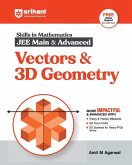- Broschiertes Buch
- Merkliste
- Auf die Merkliste
- Bewerten Bewerten
- Teilen
- Produkt teilen
- Produkterinnerung
- Produkterinnerung
Systematic reviews aim to retrieve and synthesize existing research. This book describes the process of conducting systematic reviews in educational research and can be used by any social or behavioral scientist who is interested in research synthesis through systematic reviews.
Andere Kunden interessierten sich auch für
![Education act, 1918. Report Containing a Comprehensive and Systematic Survey of the Existing Educational Facilities of the Borough, With Proposals for Their Progressive Development and Organisation During a Period of the Next ten Years; Together With a St Education act, 1918. Report Containing a Comprehensive and Systematic Survey of the Existing Educational Facilities of the Borough, With Proposals for Their Progressive Development and Organisation During a Period of the Next ten Years; Together With a St]() Education act, 1918. Report Containing a Comprehensive and Systematic Survey of the Existing Educational Facilities of the Borough, With Proposals for Their Progressive Development and Organisation During a Period of the Next ten Years; Together With a St17,99 €
Education act, 1918. Report Containing a Comprehensive and Systematic Survey of the Existing Educational Facilities of the Borough, With Proposals for Their Progressive Development and Organisation During a Period of the Next ten Years; Together With a St17,99 €![Learning My ABC's With Animals Learning My ABC's With Animals]() Marlana WilsonLearning My ABC's With Animals10,99 €
Marlana WilsonLearning My ABC's With Animals10,99 €![Intellectual Reviews of Fundamentalist Islamic Groups' Leaders and their Impact on the Jihadi Action, the Muslim world, and the West Intellectual Reviews of Fundamentalist Islamic Groups' Leaders and their Impact on the Jihadi Action, the Muslim world, and the West]() Shereef Gouda Mohamed ElaraishyIntellectual Reviews of Fundamentalist Islamic Groups' Leaders and their Impact on the Jihadi Action, the Muslim world, and the West52,99 €
Shereef Gouda Mohamed ElaraishyIntellectual Reviews of Fundamentalist Islamic Groups' Leaders and their Impact on the Jihadi Action, the Muslim world, and the West52,99 €![Vector & 3D Geometry Vector & 3D Geometry]() Amit M AgarwalVector & 3D Geometry46,99 €
Amit M AgarwalVector & 3D Geometry46,99 €![Don't Like Mondays? Make school work for you Don't Like Mondays? Make school work for you]() Sonia BlandfordDon't Like Mondays? Make school work for you22,99 €
Sonia BlandfordDon't Like Mondays? Make school work for you22,99 €![Novel: Plan It, Write It, Sell It Novel: Plan It, Write It, Sell It]() Lynne Barrett-LeeNovel: Plan It, Write It, Sell It11,99 €
Lynne Barrett-LeeNovel: Plan It, Write It, Sell It11,99 €![General History and Collection of Voyages and Travels --: Arranged in Systematic Order: Forming a Complete History of the Origin and Progress of Navig General History and Collection of Voyages and Travels --: Arranged in Systematic Order: Forming a Complete History of the Origin and Progress of Navig]() Robert KerrGeneral History and Collection of Voyages and Travels --: Arranged in Systematic Order: Forming a Complete History of the Origin and Progress of Navig28,99 €
Robert KerrGeneral History and Collection of Voyages and Travels --: Arranged in Systematic Order: Forming a Complete History of the Origin and Progress of Navig28,99 €-
-
-
Systematic reviews aim to retrieve and synthesize existing research. This book describes the process of conducting systematic reviews in educational research and can be used by any social or behavioral scientist who is interested in research synthesis through systematic reviews.
Produktdetails
- Produktdetails
- Verlag: Sage Publications Inc Ebooks
- Seitenzahl: 168
- Erscheinungstermin: 5. Dezember 2025
- Englisch
- Abmessung: 186mm x 233mm x 12mm
- Gewicht: 318g
- ISBN-13: 9781071907535
- ISBN-10: 1071907530
- Artikelnr.: 75016808
- Herstellerkennzeichnung
- Libri GmbH
- Europaallee 1
- 36244 Bad Hersfeld
- gpsr@libri.de
- Verlag: Sage Publications Inc Ebooks
- Seitenzahl: 168
- Erscheinungstermin: 5. Dezember 2025
- Englisch
- Abmessung: 186mm x 233mm x 12mm
- Gewicht: 318g
- ISBN-13: 9781071907535
- ISBN-10: 1071907530
- Artikelnr.: 75016808
- Herstellerkennzeichnung
- Libri GmbH
- Europaallee 1
- 36244 Bad Hersfeld
- gpsr@libri.de
Dr. Florence Martin is a Professor of Learning, Design and Technology at North Carolina State University. She received her Doctorate and Master¿s degrees in Educational Technology from Arizona State University. Dr. Martin engages in research to create transformative learning experiences through effective design and integration of online and digital teaching and learning innovations. In recent years, she has researched on the design of online learning environments and cybersecurity education. She has conducted several systematic reviews in educational technology and teaches a course on systematic reviews of research in addition to teaching various educational technology topics. More details can be found at https://florencemartin.wordpress.ncsu.edu/about-me
Preface
About the Author
Chapter 1: Introduction to Systematic Review of Research
1.1 Purpose of Systematic Review of Research
1.2 Processes for Conducting Systematic Reviews of Research
1.3 DISCAR Process
1.4 Supporting Resources
1.5 Benefits of Systematic Reviews of Research
Practice Activity
Reflection Questions
Chapter Summary
Chapter 2: Methodologies to Advance Secondary Research
2.1 Summary and Advocacy Argument
2.2 Methodologies that advance Secondary Research
2.3 Journals that publish Systematic Reviews in Education
Practice Activity
Reflection Questions
Chapter Summary
Chapter 3: Designing a Systematic Review of Research
3.1 Design Process and Frameworks to guide the review
3.2 Design Aspects for Systematic Review
3.3 Resource Exploration and Planning
Practice Activity
Reflection Questions
Chapter Summary
Chapter 4: Including and Excluding Studies in a Systematic Review of
Research
4.1 Importance of Developing Inclusion/Exclusion Criteria
4.2 Various Inclusion and Exclusion Criteria
4.3 Various Strategies to Develop and Adapt inclusion and Exclusion
Criteria
4.4 Bias in Inclusion and Exclusion and Strategies to Reduce Them
Practice Activity
Reflection Questions
Chapter Summary
Chapter 5: Searching and Screening during Systematic Review of Research
5.1 Importance of Searching and Screening
5.2 Search Strategies
5.3 Screening Process
5.4 Using PRISMA
5.5 Enhancing Fidelity and Reducing Bias in Searching and Screening
Practice Activity
Reflection Questions
Chapter Summary
Chapter 6: Coding Studies during Systematic Review of Research
6.1 Importance of Developing, Adapting, and Sharing the Coding Protocol
6.2 Strategies for Designing a Coding Protocol
6.3 Coding Process
6.4 Technologies for Coding
6.5 Strategies to Reduce Coding Bias
Practice Activity
Reflection Questions
Chapter Summary
Chapter 7: Analyzing and Synthesizing Studies in Systematic Reviews of
Research
7.1 Importance of Analysis and Synthesis
7.2 Appraising the Quality of Primary Research
7.3 Publication Patterns and Research Trends
7.4 Methods to Analyze and Synthesize Qualitative and Quantitative Data
7.5 Providing a Critical Interpretation during synthesis
Practice Activity
Reflection Questions
Chapter Summary
Chapter 8: Reporting Findings in Systematic Review of Research
8.1 Strategies to Report Findings and Discussion
8.2 Creating Tables and Visuals to Report Findings
8.3 Using A Critical Lens When Reporting Findings and In Discussion
8.4 Providing Implications for various stakeholders
8.5 Disclosing limitations of the systematic review
Practice Activity
Reflection Questions
Chapter Summary
Chapter 9: Technologies for Systematic Review of Research
9.1 Using Technologies during Systematic Reviews
9.2 Technologies for Searching
9.3 Technologies for Data Management
9.4 Technologies for Screening
9.5 Technologies for Coding or Data Extraction
9.6 Technologies for Analysis and Reporting
9.7 Technologies for Collaboration
Practice Activity
Chapter Summary
Chapter 10: Ethical Considerations, Guidelines and Future Outlook for
Systematic Reviews of Research
10.1 Review of the DISCAR Process
10.2 Ethical Considerations
10.3 Guidelines for Authors, Reviewers and Editors
10.4 Future Outlook for Systematic Reviews of Research
Final Thoughts
Practice Activity
Reflection Questions
Chapter Summary
Conclusion
References
Index
About the Author
Chapter 1: Introduction to Systematic Review of Research
1.1 Purpose of Systematic Review of Research
1.2 Processes for Conducting Systematic Reviews of Research
1.3 DISCAR Process
1.4 Supporting Resources
1.5 Benefits of Systematic Reviews of Research
Practice Activity
Reflection Questions
Chapter Summary
Chapter 2: Methodologies to Advance Secondary Research
2.1 Summary and Advocacy Argument
2.2 Methodologies that advance Secondary Research
2.3 Journals that publish Systematic Reviews in Education
Practice Activity
Reflection Questions
Chapter Summary
Chapter 3: Designing a Systematic Review of Research
3.1 Design Process and Frameworks to guide the review
3.2 Design Aspects for Systematic Review
3.3 Resource Exploration and Planning
Practice Activity
Reflection Questions
Chapter Summary
Chapter 4: Including and Excluding Studies in a Systematic Review of
Research
4.1 Importance of Developing Inclusion/Exclusion Criteria
4.2 Various Inclusion and Exclusion Criteria
4.3 Various Strategies to Develop and Adapt inclusion and Exclusion
Criteria
4.4 Bias in Inclusion and Exclusion and Strategies to Reduce Them
Practice Activity
Reflection Questions
Chapter Summary
Chapter 5: Searching and Screening during Systematic Review of Research
5.1 Importance of Searching and Screening
5.2 Search Strategies
5.3 Screening Process
5.4 Using PRISMA
5.5 Enhancing Fidelity and Reducing Bias in Searching and Screening
Practice Activity
Reflection Questions
Chapter Summary
Chapter 6: Coding Studies during Systematic Review of Research
6.1 Importance of Developing, Adapting, and Sharing the Coding Protocol
6.2 Strategies for Designing a Coding Protocol
6.3 Coding Process
6.4 Technologies for Coding
6.5 Strategies to Reduce Coding Bias
Practice Activity
Reflection Questions
Chapter Summary
Chapter 7: Analyzing and Synthesizing Studies in Systematic Reviews of
Research
7.1 Importance of Analysis and Synthesis
7.2 Appraising the Quality of Primary Research
7.3 Publication Patterns and Research Trends
7.4 Methods to Analyze and Synthesize Qualitative and Quantitative Data
7.5 Providing a Critical Interpretation during synthesis
Practice Activity
Reflection Questions
Chapter Summary
Chapter 8: Reporting Findings in Systematic Review of Research
8.1 Strategies to Report Findings and Discussion
8.2 Creating Tables and Visuals to Report Findings
8.3 Using A Critical Lens When Reporting Findings and In Discussion
8.4 Providing Implications for various stakeholders
8.5 Disclosing limitations of the systematic review
Practice Activity
Reflection Questions
Chapter Summary
Chapter 9: Technologies for Systematic Review of Research
9.1 Using Technologies during Systematic Reviews
9.2 Technologies for Searching
9.3 Technologies for Data Management
9.4 Technologies for Screening
9.5 Technologies for Coding or Data Extraction
9.6 Technologies for Analysis and Reporting
9.7 Technologies for Collaboration
Practice Activity
Chapter Summary
Chapter 10: Ethical Considerations, Guidelines and Future Outlook for
Systematic Reviews of Research
10.1 Review of the DISCAR Process
10.2 Ethical Considerations
10.3 Guidelines for Authors, Reviewers and Editors
10.4 Future Outlook for Systematic Reviews of Research
Final Thoughts
Practice Activity
Reflection Questions
Chapter Summary
Conclusion
References
Index
Preface
About the Author
Chapter 1: Introduction to Systematic Review of Research
1.1 Purpose of Systematic Review of Research
1.2 Processes for Conducting Systematic Reviews of Research
1.3 DISCAR Process
1.4 Supporting Resources
1.5 Benefits of Systematic Reviews of Research
Practice Activity
Reflection Questions
Chapter Summary
Chapter 2: Methodologies to Advance Secondary Research
2.1 Summary and Advocacy Argument
2.2 Methodologies that advance Secondary Research
2.3 Journals that publish Systematic Reviews in Education
Practice Activity
Reflection Questions
Chapter Summary
Chapter 3: Designing a Systematic Review of Research
3.1 Design Process and Frameworks to guide the review
3.2 Design Aspects for Systematic Review
3.3 Resource Exploration and Planning
Practice Activity
Reflection Questions
Chapter Summary
Chapter 4: Including and Excluding Studies in a Systematic Review of
Research
4.1 Importance of Developing Inclusion/Exclusion Criteria
4.2 Various Inclusion and Exclusion Criteria
4.3 Various Strategies to Develop and Adapt inclusion and Exclusion
Criteria
4.4 Bias in Inclusion and Exclusion and Strategies to Reduce Them
Practice Activity
Reflection Questions
Chapter Summary
Chapter 5: Searching and Screening during Systematic Review of Research
5.1 Importance of Searching and Screening
5.2 Search Strategies
5.3 Screening Process
5.4 Using PRISMA
5.5 Enhancing Fidelity and Reducing Bias in Searching and Screening
Practice Activity
Reflection Questions
Chapter Summary
Chapter 6: Coding Studies during Systematic Review of Research
6.1 Importance of Developing, Adapting, and Sharing the Coding Protocol
6.2 Strategies for Designing a Coding Protocol
6.3 Coding Process
6.4 Technologies for Coding
6.5 Strategies to Reduce Coding Bias
Practice Activity
Reflection Questions
Chapter Summary
Chapter 7: Analyzing and Synthesizing Studies in Systematic Reviews of
Research
7.1 Importance of Analysis and Synthesis
7.2 Appraising the Quality of Primary Research
7.3 Publication Patterns and Research Trends
7.4 Methods to Analyze and Synthesize Qualitative and Quantitative Data
7.5 Providing a Critical Interpretation during synthesis
Practice Activity
Reflection Questions
Chapter Summary
Chapter 8: Reporting Findings in Systematic Review of Research
8.1 Strategies to Report Findings and Discussion
8.2 Creating Tables and Visuals to Report Findings
8.3 Using A Critical Lens When Reporting Findings and In Discussion
8.4 Providing Implications for various stakeholders
8.5 Disclosing limitations of the systematic review
Practice Activity
Reflection Questions
Chapter Summary
Chapter 9: Technologies for Systematic Review of Research
9.1 Using Technologies during Systematic Reviews
9.2 Technologies for Searching
9.3 Technologies for Data Management
9.4 Technologies for Screening
9.5 Technologies for Coding or Data Extraction
9.6 Technologies for Analysis and Reporting
9.7 Technologies for Collaboration
Practice Activity
Chapter Summary
Chapter 10: Ethical Considerations, Guidelines and Future Outlook for
Systematic Reviews of Research
10.1 Review of the DISCAR Process
10.2 Ethical Considerations
10.3 Guidelines for Authors, Reviewers and Editors
10.4 Future Outlook for Systematic Reviews of Research
Final Thoughts
Practice Activity
Reflection Questions
Chapter Summary
Conclusion
References
Index
About the Author
Chapter 1: Introduction to Systematic Review of Research
1.1 Purpose of Systematic Review of Research
1.2 Processes for Conducting Systematic Reviews of Research
1.3 DISCAR Process
1.4 Supporting Resources
1.5 Benefits of Systematic Reviews of Research
Practice Activity
Reflection Questions
Chapter Summary
Chapter 2: Methodologies to Advance Secondary Research
2.1 Summary and Advocacy Argument
2.2 Methodologies that advance Secondary Research
2.3 Journals that publish Systematic Reviews in Education
Practice Activity
Reflection Questions
Chapter Summary
Chapter 3: Designing a Systematic Review of Research
3.1 Design Process and Frameworks to guide the review
3.2 Design Aspects for Systematic Review
3.3 Resource Exploration and Planning
Practice Activity
Reflection Questions
Chapter Summary
Chapter 4: Including and Excluding Studies in a Systematic Review of
Research
4.1 Importance of Developing Inclusion/Exclusion Criteria
4.2 Various Inclusion and Exclusion Criteria
4.3 Various Strategies to Develop and Adapt inclusion and Exclusion
Criteria
4.4 Bias in Inclusion and Exclusion and Strategies to Reduce Them
Practice Activity
Reflection Questions
Chapter Summary
Chapter 5: Searching and Screening during Systematic Review of Research
5.1 Importance of Searching and Screening
5.2 Search Strategies
5.3 Screening Process
5.4 Using PRISMA
5.5 Enhancing Fidelity and Reducing Bias in Searching and Screening
Practice Activity
Reflection Questions
Chapter Summary
Chapter 6: Coding Studies during Systematic Review of Research
6.1 Importance of Developing, Adapting, and Sharing the Coding Protocol
6.2 Strategies for Designing a Coding Protocol
6.3 Coding Process
6.4 Technologies for Coding
6.5 Strategies to Reduce Coding Bias
Practice Activity
Reflection Questions
Chapter Summary
Chapter 7: Analyzing and Synthesizing Studies in Systematic Reviews of
Research
7.1 Importance of Analysis and Synthesis
7.2 Appraising the Quality of Primary Research
7.3 Publication Patterns and Research Trends
7.4 Methods to Analyze and Synthesize Qualitative and Quantitative Data
7.5 Providing a Critical Interpretation during synthesis
Practice Activity
Reflection Questions
Chapter Summary
Chapter 8: Reporting Findings in Systematic Review of Research
8.1 Strategies to Report Findings and Discussion
8.2 Creating Tables and Visuals to Report Findings
8.3 Using A Critical Lens When Reporting Findings and In Discussion
8.4 Providing Implications for various stakeholders
8.5 Disclosing limitations of the systematic review
Practice Activity
Reflection Questions
Chapter Summary
Chapter 9: Technologies for Systematic Review of Research
9.1 Using Technologies during Systematic Reviews
9.2 Technologies for Searching
9.3 Technologies for Data Management
9.4 Technologies for Screening
9.5 Technologies for Coding or Data Extraction
9.6 Technologies for Analysis and Reporting
9.7 Technologies for Collaboration
Practice Activity
Chapter Summary
Chapter 10: Ethical Considerations, Guidelines and Future Outlook for
Systematic Reviews of Research
10.1 Review of the DISCAR Process
10.2 Ethical Considerations
10.3 Guidelines for Authors, Reviewers and Editors
10.4 Future Outlook for Systematic Reviews of Research
Final Thoughts
Practice Activity
Reflection Questions
Chapter Summary
Conclusion
References
Index








